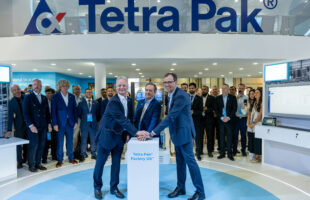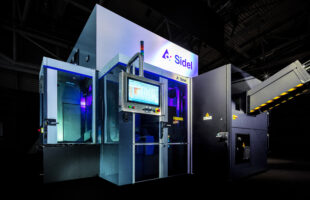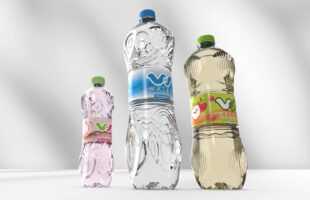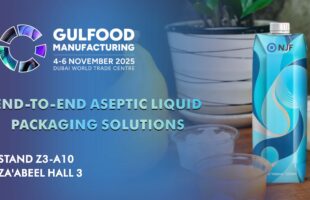
Courtesy of okaykat/Unsplash
By: Dr. Bettina Plaumann, Kuraray Europe, Segment Team Paper & Packaging
Various trends and requirements are currently transforming the packaging market: renewable raw materials, reducing the amount of packaging material, cutting CO2 emissions, monolayer packaging, recyclability, repulpability and biodegradability – to name a few. The overriding and most urgent trend in packaging is sustainability. That has resulted in the development of packaging concepts centred on sustainability for various types of products.
In the dry pet food market, however, conventional paper packaging is considered problematic because it uses halogenated fluoropolymers to create a barrier to fat. In this sector, applying a very thin layer of carefully selected plastics may make more sense and be more sustainable.
The pet food market is booming
In industrialized countries, the pet food market has grown rapidly in recent years – in parallel with the number of pets. The restrictions imposed during the pandemic doubtless contributed to the increased interest in pets, which has also led to a boom in pet food. In fact, the number of packaging units sold is growing faster for dog and cat food than for any other type of fast-moving consumer goods (FMCG): the compound annual growth rate (CAGR) was around 25 percent between 2015 and 2020.
Paper is regarded as sustainable
Consumers generally regard paper-based packaging as more sustainable. That applies to food for human consumption as well as pet food. However, it is vital to ensure that innovative packaging solutions continue to meet the full range of functional requirements for food or – in this case – pet food packaging. That is an inherent challenge for paper-based packaging because a reliable barrier to the fat content of pet food is essential.
For example, cat food generally has a 10 percent fat content, while the fat content of dog food is typically up to 20 percent.
Fluorinated hydrocarbons are problematic
In conventional paper-based packaging, the essential greaseproof barrier is normally achieved with the aid of very problematic substances: fluorinated hydrocarbons. Halogenated polymers such as fluoropolymers are highly controversial because of their potential harmful effect on the human – and animal –- organism.
Moreover, pet food packaging containing fluoropolymers is extremely difficult to recycle. New, more sustainable alternatives to the common packaging types used at present need to ensure a similar barrier to aroma, odour and grease.
Intelligent new sustainable packaging concepts
The four paper-based packaging innovations presented here meet these requirements because their barrier properties are based on Kuraray’s future-oriented polymers. These sustainable packaging solutions, some of which are already in commercial use, are ideal replacements for paper and cardboard-based packaging with greaseproof properties based on fluoropolymers. They combine sustainability with functionality.
1. EXCEVAL-coated paper bags
Example of a conceptual structure for such packaging: Paper/moisture barrier coating/ EXCEVAL coating/heat-sealable coating
This type of paper-based packaging is already in commercial use in the food sector. A thin, water-soluble EXCEVAL coating acts as an oxygen and aroma barrier. EXCEVAL is a halogen-free, hydrophobically modified polyvinyl alcohol (PVOH) from Kuraray. It has been specifically developed to ensure it is resistant to water, oil and grease. EXCEVAL can be applied to paper using conventional coating equipment such as rotogravure coaters and rod coaters.
Dispersions of polyolefin or other polymers are used as a heat-sealable coating on the inside of the packaging. The big advantage of these structures is that they can be repulped without problem in standard paper mills. Repulping is a technology approach established in the paper industry for many years. However, it cannot be used for fluoropolymers because they are not soluble in water.
2. Paper-based pouches with a vacuum-metallized layer of EVAL and BOPP
This packaging concept is based on the following conceptual structure: Paper/vacuum metallized EVAL EVOH BOPP/laminated cast polypropylene
Kuraray’s ethylene vinyl alcohol copolymers (EVOH) are marketed as EVAL. A film made from EVAL EVOH and biaxially-oriented polypropylene (BOPP) is metallized under vacuum with a thin layer of aluminium, creating a barrier to aroma, oxygen, light and moisture. A simple cast polypropylene foil is laminated onto the inside of the pouch to act as the sealing layer. A tenter frame is used for the coextrusion of the BOPP and EVOH for the outer layer. This packaging concept avoids using a far greater amount of aluminium in the form of aluminium foil.
Nevertheless, EVAL EVOH provides an excellent substrate for vapour deposition of aluminium as well as an extremely reliable oxygen and aroma barrier. The packaging, therefore, prevents oxidation of the fats contained in dry pet food. The vacuum metallized layer is a very good light barrier and preserves the vitamin C in the pet food.
This packaging concept uses the smallest possible amount of plastic and also optimizes the repulpability of the paper fibres because they can easily be separated from the small amount of polymers in the washing-step system. The reduction in the amount of aluminium deposited also makes the polymers used in this paper packaging recyclable.
3. Paper-based pouches with a metallized film layer of EVAL and MDO-PE
This packaging concept is based on the following conceptual structure: Paper/vacuum metallized EVAL EVOH MDO-PE / CPE
This paper packaging is based on the same principle as the previous example. However, in this case, the ethylene vinyl alcohol copolymer (EVOH) is combined with polyethylene instead of polypropylene. The inner sealing layer is made of polyethylene, and the vacuum metallized film and EVAL EVOH are deposited on machine-direction-oriented polyethylene (MDO-PE). Thanks to the tremendous technological advances that machine manufacturers have made in production equipment for multilayer film in recent years, multilayer films with MDO-PE have become an attractive alternative.
Using MDO technology, both cast and blown co-extruded films can be uniaxially oriented to achieve better properties. This packaging concept also prevents fat oxidation and preserves vitamin C in pet food. The packaging does not contain any aluminium foil or BOPET. Moreover, it uses the smallest possible amount of polymer and allows problem-free repulping of paper fibres.
4. Repulpable paper packaging with PLANTIC biopolymer
This packaging concept is based on the following conceptual structure: Paper/PLANTIC film/sealing layer made of, e.g. PE, PBS or PBAT
This paper packaging is already used commercially for food. PLANTIC film is laminated onto the inner side of the paper. Kuraray produces PLANTIC biopolymer from renewable raw materials. It is made from thermoplastic starch and is biodegradable and compostable (home and industrial composting).
Due to its high gas barrier properties, this biopolymer can be used in packaging that preserves aroma and effectively keeps out oxygen. In this packaging concept, an inner sealing layer – polyethylene, polybutylene succinate or polybutylene adipate terephthalate – is applied to the PLANTIC film and also acts as a moisture barrier.
The production technologies used for this type of packaging are extrusion coating, lamination and extrusion lamination. The inner sealing layer and adhesive can easily be separated from the paper in the repulping process. Moreover, thanks to this biopolymer, the repulping yield is higher than, e.g. a conventional PE layer because the fibres do not penetrate the PLANTIC film. Consequently, all of the paper fibres can be repulped without difficulty.
Consumers and brand owners driving the trend
Greater sustainability and circularity are urgent issues for society and are being driven forward by legislators, consumers, brand owners, and manufacturers. The objective is to find circular packaging solutions. Several major players in the food sector, from Danone and Mondelez to Nestlé and Unilever, have already published voluntary commitments or pledges. There is still plenty of scope to improve packaging sustainability for dry pet food. Intelligent use of modern polymers can help give popular paper-based packaging the necessary functionality – without compromising on sustainability.
Learn more about the wide range of high-performance materials to make packaging more sustainable and functional.
About the Author:
Dr. Bettina Plaumann studied pharmacy and subsequently held various positions in marketing communications in the pharmaceutical/chemical sector before joining Kuraray as Head of KEG Communications & Marketing in 2015. Since 2020, she has led the Kuraray Segment Marketing Team Paper & Packaging.








